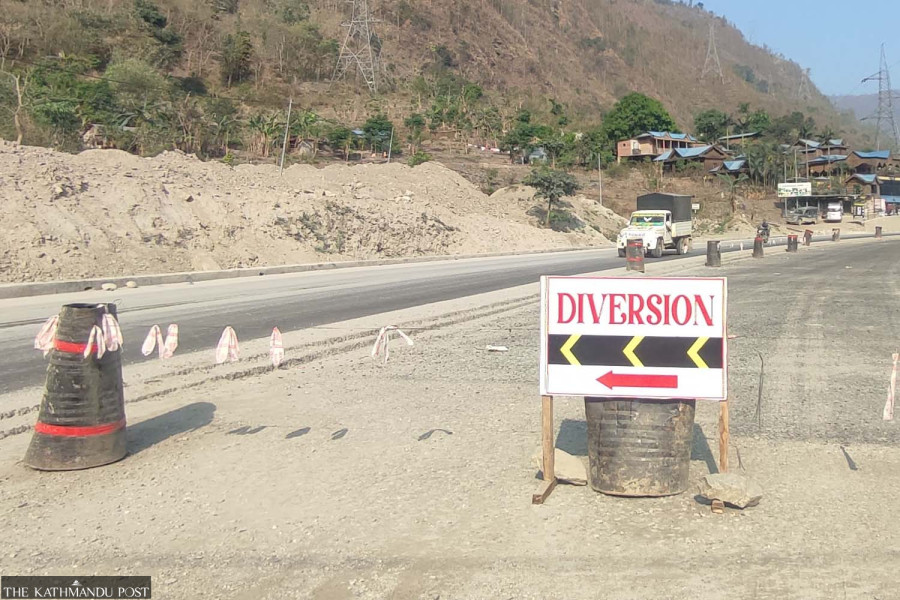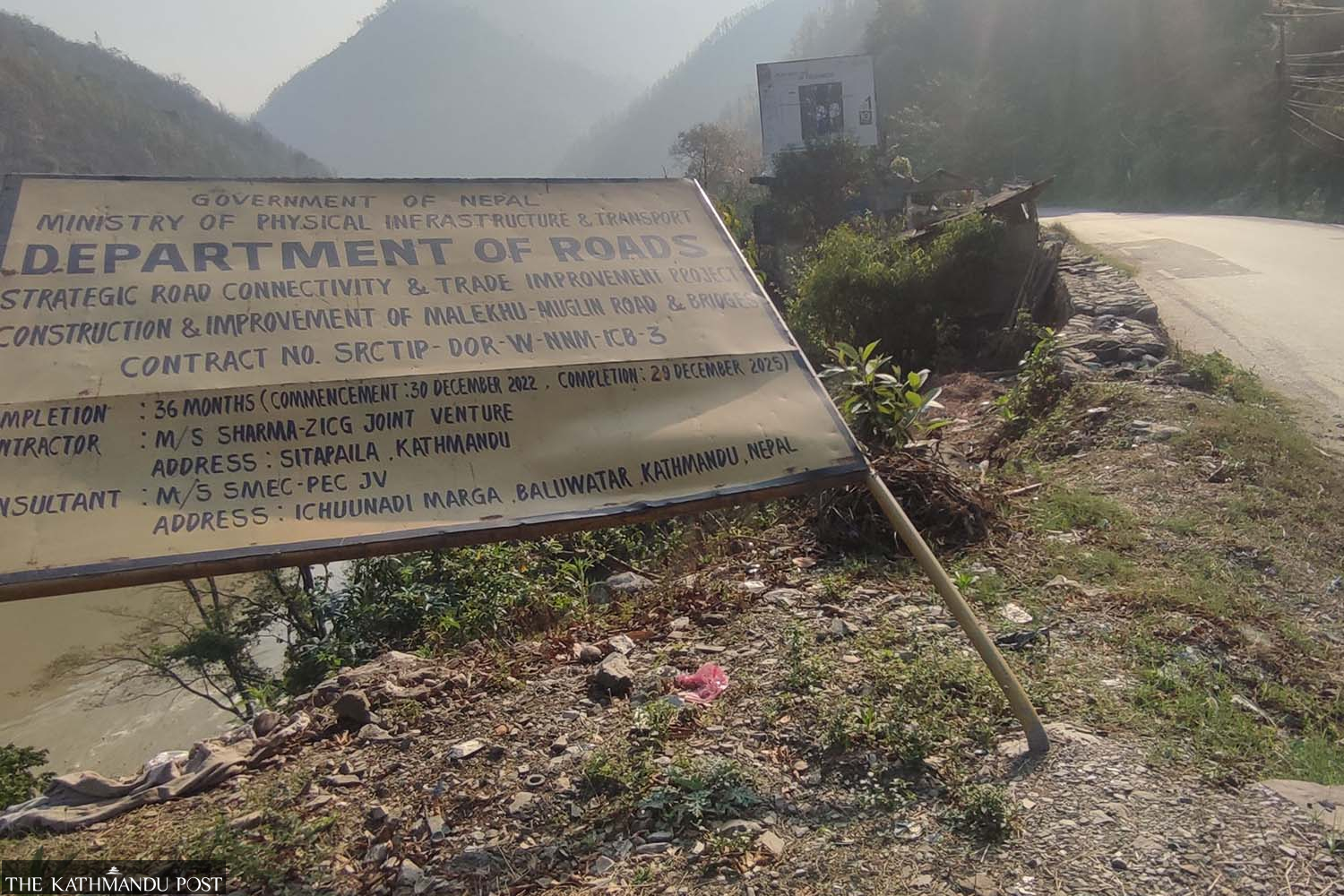Bagmati Province
Muglin–Malekhu road widening work crawls along. Just 26 percent work completed in 28 months
Prithvi Highway’s Muglin-Kathmandu section serves as the main gateway to the Capital for vehicles coming from the east, west, and south.
Ramesh Kumar Paudel
The road widening work along the Muglin-Malekhu section of Prithvi Highway, the country’s busiest road, is underway but crawling at a snail’s pace. Just 26 percent of the work has been completed in 28 months.
The Muglin-Nagdhunga Road Project started the road widening and upgrade work by dividing the 94-km Muglin-Nagdhunga stretch into three sections. The Department of Roads signed a project agreement with a construction company on December 30, 2022 to complete the work along the 39 km-long Muglin-Malekhu stretch within 36 months.
According to the agreement, the project deadline ends on December 29, 2025. However, progress along the Muglin–Malekhu section remains sluggish. “Only around 26 percent of the construction work has been completed so far,” said engineer Sachendra Mishra, information officer for the western sector of the project.
With just over seven months remaining in the contract period, the progress is painfully slow. Mishra, however, claimed the pace has picked up in recent weeks. “We aim to complete 45 to 48 percent of the work by the end of the current fiscal year on July 15. Apart from managing daily traffic flow, there are no major obstacles to road expansion,” said Mishra.
Driving from Muglin, the poor condition of the road is immediately apparent. Even the project’s information board near Muglin lies damaged, reflecting the slow pace of progress. Only after about two kilometres ahead, signs of construction are visible as roadside hills have been cut. Near the cable car station, actual road expansion work becomes noticeable.
Binod Acharya, a microbus driver operating on the Shaktikhor–Kathmandu route for the past 11 years, expressed his frustration. “During the monsoon, travel becomes a nightmare. It used to take 3.5 to 4 hours from Narayanghat to Kathmandu, now it takes at least five,” he said. According to him, the dusty, pothole-ridden road is highly uncomfortable for passengers and although some repairs are underway, progress feels unnecessarily delayed.

The road expansion project also includes six new bridges, four of which are expected to be completed by July, according to Mishra. Pillars for the remaining two bridges have already been erected. Work on the other two sections of the Nagdhunga–Muglin stretch is also incomplete.
Within the 39-km western section, about two kilometres—covering Benighat, Malekhu, and Muglin bazar areas—will be widened to six lanes. Around seven kilometres will be upgraded to four lanes, while the remaining stretches will be widened into a standard two-lane highway. So far, approximately 4.5 km of road has been blacktopped, and base layer work has been completed on an additional 2.5 km.
The road is crucial for both passengers and freight transport, and delays have caused widespread inconvenience. “Major time-consuming tasks such as removing houses, cutting trees, and relocating electric poles have already been completed. There’s no shortage of construction materials either. Now we can finally accelerate,” Mishra said.
Prithvi Highway links Nepal’s two major cities—Kathmandu and Pokhara. It was built with Chinese assistance and completed in 1974. One of the busiest highways in the country, it faces frequent traffic jams. The highway traffic is expected to ease once the road widening work is completed.
The highway, particularly the Muglin-Kathmandu section, serves as the main gateway to the Capital for vehicles coming from eastern, western and southern parts of the country. Around 18,000 vehicles ply the road daily, according to the Department of Roads.
The Muglin-Nagdhunga project plans to build three lanes in a steep section of the road and six lanes in town areas. A separate lane will be for goods carriers in steep stretches. Around six kilometres will be expanded to three lanes at different places, about five kilometres will be expanded to six or seven lanes, while the rest will remain two lanes.
Kathmandu, the national capital, does not have a reliable alternative to Prithvi Highway as its main supply line. Some road projects including the Kathmandu-Nijgadh Expressway, Kanti Rajpath connecting Kathmandu to Hetuada, and the Kathmandu-Hetauda Tunnel Road have been planned as alternatives, but the progress of these has also been slow. Also, the BP Highway, which was severely damaged by floods and landslides in the last week of September 2024, has not yet been repaired in a sustainable way.




 16.16°C Kathmandu
16.16°C Kathmandu1.jpg)












